Isabella Jessee
9/30, 4:15-5:52pm, 75˚F, cloudy and sprinkling rain then raining heavily then sunshine
Being a commuter student, I selected my backyard as my sit-spot not only out of convenience but because of the wildlife I tend to see. From birds and butterflies to squirrels, rabbits, and deer, we see it all! We recently redid our screened-in porch, and I have been sitting outside in the evenings because that time of day is most comfortable. From my screened-in porch, I have a great view of my entire backyard. Immediately outside of the porch is where I sit and watch the environment around me. I’m glad I have this space in my backyard to be in tune with nature. Adding the bird feeder and making the screened-in porch a comfortable place really contributes to being able to watch my surroundings and be interested in them.
Since the last journal, I discovered that the tree on which I am focusing is actually a red maple, not a sugar maple. This makes sense because come to think of it, it does turn completely red in the fall. The bird feeder was also relocated to about 4-5 feet from the tree trunk. The sky had been cloudy all day, and as soon as I stepped onto the porch, it began to lightly sprinkle rain. A gray squirrel was leaving the red maple tree, and 4 crows were walking around pecking at the ground. I assume because it had been raining lightly that some insects and worms had surfaced and became the crow’s current food source. Google helped me be able to tell the difference between a crow and raven, and these were definitely crows, not as big or long-tailed as ravens. Over the period of about 20 to 30 minutes, the rain became heavier. It rained at that consistent rate for about 20 minutes then stopped, and the sun came out. I could feel the humidity increasing. During the rain, I saw no animals and heard very few birds. When the sun came out, and the rain was complete, birds began approaching the bird feeder. I also began hearing more birds communicating at that point. I pulled out my phone and began researching to see if I could match any bird calls, but I was unsuccessful. I searched some of the birds I commonly see in my backyard: crows, robins, sparrows, finches, blue jays, and redbirds. None seemed to match what I heard. The birds whose calls I could not identify were mostly in the south. One bird’s call sounded like a tweet that lasted one second max. I could, however, identify crows in the distance to the north. I knew they were in the north using a compass. Facing the tree from my angle, the tree was 288˚WNW.
When the rain had passed, the first bird to approach the bird feeder was a cardinal. It stayed at the feeder picking through seeds for no longer than a minute then flew away. Why do their feathers on top of their head always stand in a point? I would think this has something to do with males attracting a mate. This brings me to these questions: do females also have the feather point? If it is associated with attracting mates, why do they always have the feathers pointed and not just point them upward when attracting a mate? When the cardinal left, I saw a small monarch butterfly flying the highest I have ever seen one fly. It flew to the top of the tree then I lost track of it. According to my compass, it was heading south, so this butterfly was likely migrating. Next, I saw a blue jay several yards behind the red maple flying to another tree. Another squirrel approached the bird feeder as well as a brown finch. I wonder why finches adapted to be so small. This squirrel hung around much longer than the finch and was collecting as many seeds as it could.
Since there was no wildlife I could spot during the rain. I chose to focus on the ground and the tree. Last time I journaled, the tree was completely green. However, this time, I noticed that the tree had about 10 leaves that had turned a reddish orange. They stood out amongst the majority, still vibrant, green leaves. The grass was still green, as it was in the last journal, but much more dull looking; the green was not as bright. The sky differed as well. Last time, the sky was a very light blue. For this journal, the sky was still that very light blue but much brighter towards the end of my journaling since the sun had just dramatically recommenced shining brightly after the rain. The clouds disappeared, and the sky cleared. The air had that certain post-rain scent as well.
The 3 objects I selected were the red maple tree I’ve been following, a spider web from my first journal, and a root from the maple tree that has protruded out of the ground. The spider web was formed at the base of a thick bottom branch. The web had a few gnats in it but mostly pieces of leaves. As with the last time I looked at the web, I see no spider nearby. There are several roots protruding from the ground, but I chose one in particular because it seemed to be protruding the most. It was very dark brown looking since it had just rained, and looking at the photo, in the upper half past the light circular nob, I noticed what appears to be a smaller root wrapping around the larger one. How did this happen? Why did the roots protrude? Is this bad for the tree? Are microorganisms impacted by this? Does this affect the tree’s stability? The photos below show what I saw during my journaling time.


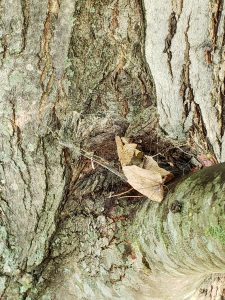
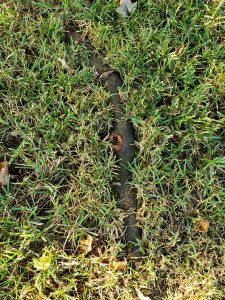

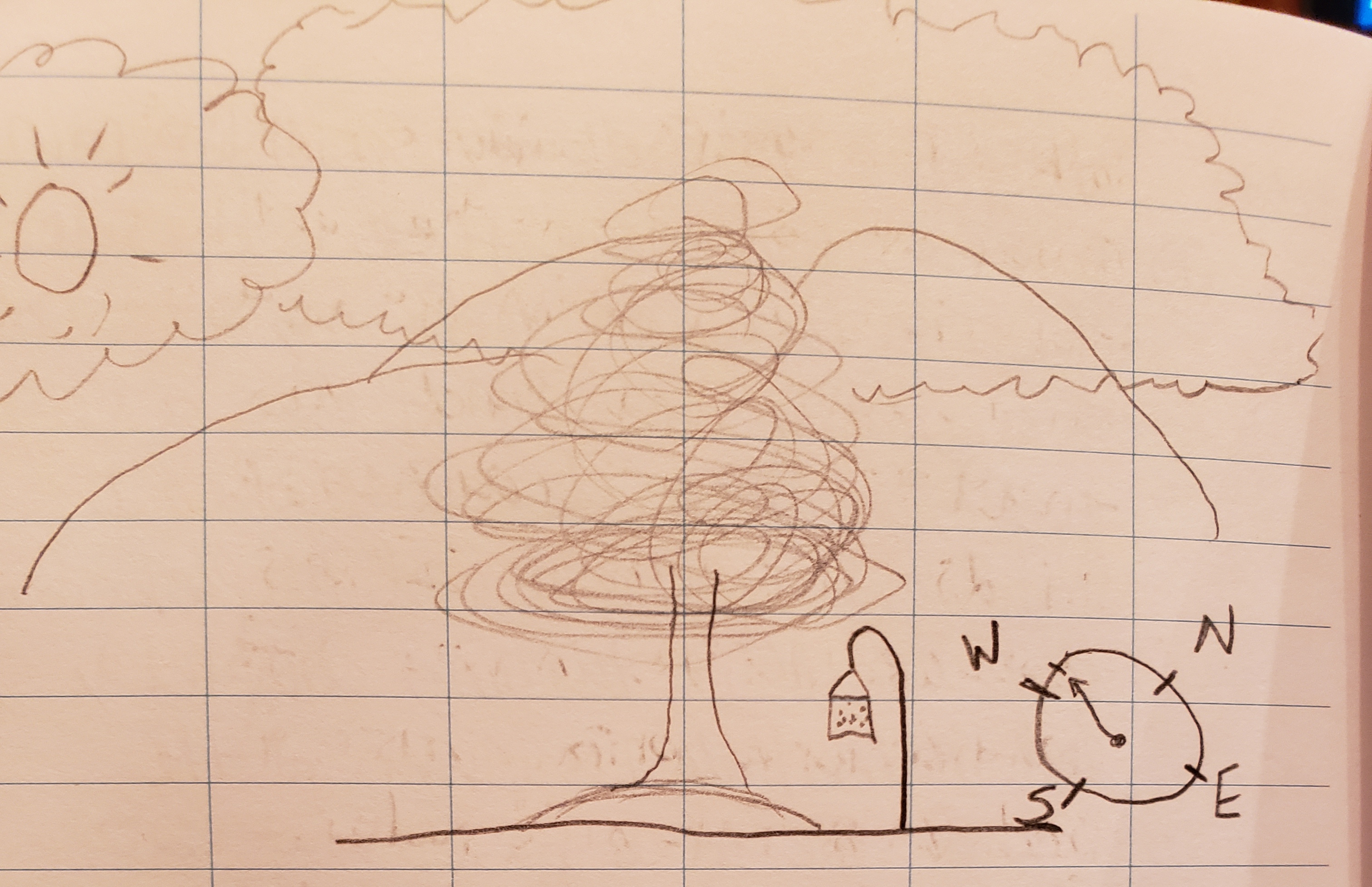
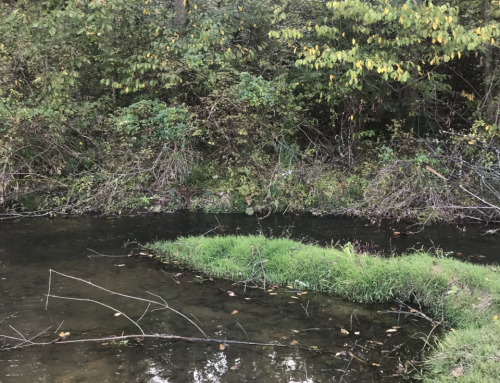
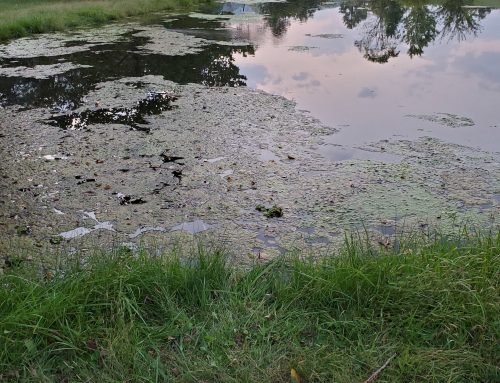
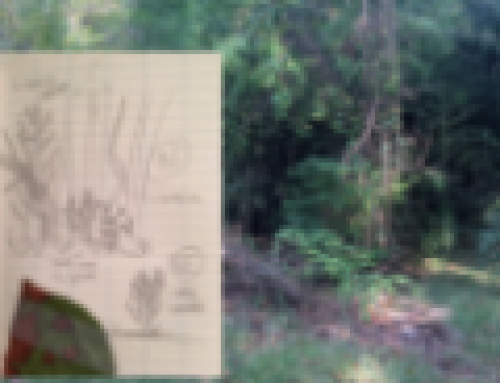
Hi!
I find it really fun and refreshing that you do your sit-spot project at home. It provides some new things to observe that what is just on campus.
I also appreciate how detailed your observations were; capturing all the little details. I am now personally excited to see your red maple turn completely red as well as see more bird if you have the chance to photograph them!
Thank you! The tree turning red this year will definitely mean a lot more now that I know it IS a red maple.
nice blog and great details!
I loved reading your blog! It was very detailed and helped me visualize the sit spot pretty well.
Great Blog Isabella! I love how you wrote it as a narrative instead of just answering the questions in a basic manner, it made it smooth to read and your vivid details also helped in that aspect!